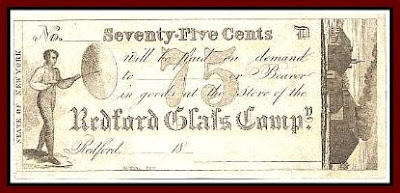Over the past few weeks, as we’ve been preparing for the holiday season here at the Alice, one of the questions that’s frequently come up is “What was a colonial Christmas like?” This is a really tricky question to answer for a number of reasons. For one, “colonial” as a term encompasses more than 150 years of history, a large geographical range, and many religious and ethnic variations. Christmas in a 17th-century New England village would have looked very different from Christmas on an 18th-century Virginia plantation. Second, there are very few contemporary historical sources that describe what Christmas was like in North America—most of what historians think about colonial Christmases is based on the assumption that they followed English customs.
 |
| Many Americans first saw a Christmas tree in this illustration of Queen Victoria and her family, published in Godey’s Lady’s Book in 1850. |
In the 17th and 18th century, Christmas was for some people a religious holiday that should be observed solemnly in church and quietly at home. In Puritan New England Christmas was not celebrated at all, and in fact was outlawed between 1659 and 1681. Puritans objected to Christmas because they felt that the commemoration of Christ’s birth on December 25 had no scriptural basis, and because of the holiday’s association with Catholic customs. The Puritan opposition to Christmas as a time of feasting, drinking, gambling, and general merriment suggests that for many people, the winter holiday served as an excuse for revelry during the darkest days of the year.
 |
| The centerpiece of “Christmas in the Country,” as depicted in this 18th-century print, was a large bowl of punch. |
In some places, a “Lord of Misrule” was chosen to organize and encourage revelry and even mild disobedience. Christmas was a brief season during which normal rules and routines were overturned, when servants could demand gifts from masters and peasants demand drink from the local gentry, as in the song “Here We Come A-Wassailing.” So although Christmas wasn’t yet a truly gift-oriented holiday, there was a certain kind of non-reciprocal gift-giving that was expected during the season. On Boxing Day (December 26, St. Stephen’s Day), parents and masters gave presents (usually food, clothing, or money) to their children, servants, slaves, or apprentices.
 |
| Another 18th-century depiction of holiday festivities. |
The holy-branch with prickly leaves replete,
And fraught with berries of a crimson hue;
Which, torn asunder from its parent trunk,
Is straight way taken to the neighboring towns;
Where windows, mantels, candlesticks,
and shelves,
Quarts, pints, decanters, pipkins, basons, jugs,
And other articles of household ware,
The verdant garb confess.
So, in decorating the Alice for the holidays, we’ve had to use our imagination a bit. We have used mostly natural elements for decoration—greenery, fruit, berries, nuts. And we do have a Christmas tree, which we’ve decorated with a combination of glass and homemade paper ornaments, like this cornucopia—perfect for holding candy or other treats!
We hope that all of our readers have a very happy holiday season. Best wishes for the new year, and we’ll be back with more tales from the collection in 2016!




































